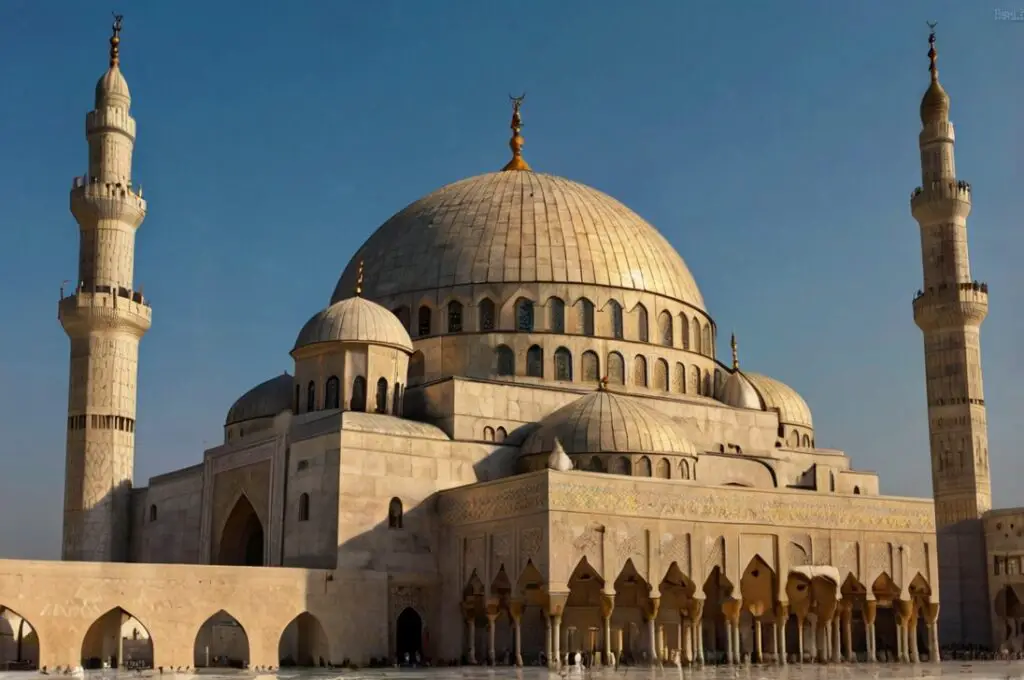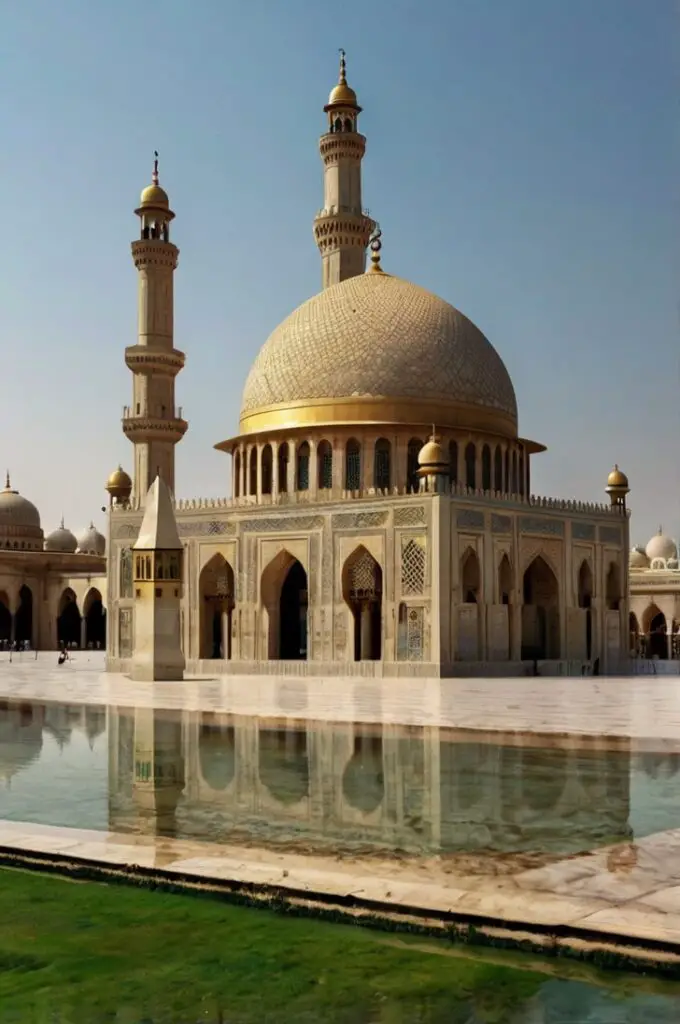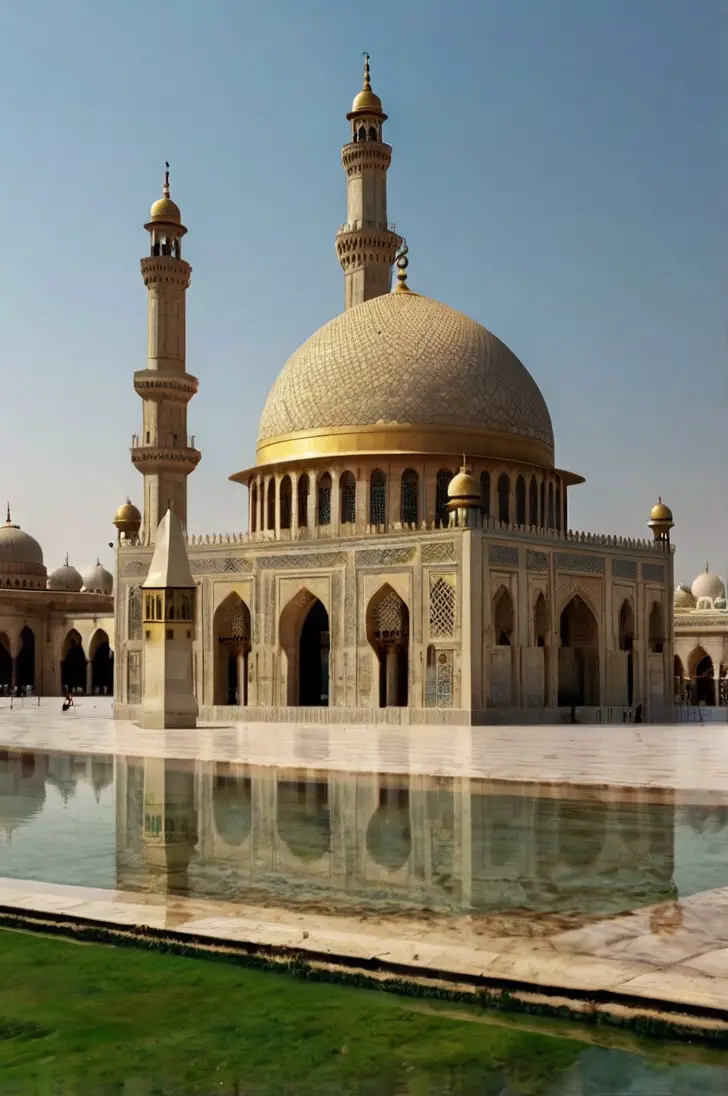
Islam, one of the world’s major religions, has a rich and intricate history spanning over a millennium.
Understanding this history helps to appreciate the profound impact Islam has had on global culture, politics, and society.
This blog post explores the timeline of the rise of Islam, from its early beginnings to the modern era, highlighting key events and developments along the way.
Early Beginnings (570-632 CE)
Birth of Prophet Muhammad (570 CE)
Prophet Muhammad was born in 570 CE in Mecca, a city in what is now Saudi Arabia.
His early life was marked by loss; he was orphaned at a young age.
His grandfather initially took care of him, and after his grandfather’s death, his uncle became his guardian.
Despite these challenges, Muhammad grew up to be a well-respected merchant, known for his honesty and integrity.
His reputation for truthfulness earned him the nickname “Al-Amin,” meaning “the trustworthy.”
- Read also: How did Islam Spread? The Facts About Moslem Populations
- Read also: Chronicles of Faith: Tracing the Islamic Caliphates Timeline
First revelation (610 CE)
At the age of 40, Muhammad began spending time in the Cave of Hira, located on the Mountain of Light near Mecca.
He sought solitude and reflection away from the bustling city.
In 610 CE, while in the cave, he received a profound experience that marked the start of his prophetic mission.
The Angel Gabriel appeared to him and conveyed the first revelation from God.
This momentous event set the foundation for the teachings that would later be compiled into the Quran, Islam’s holy book.
Over the next 23 years, Muhammad continued to receive these revelations, guiding him and his followers in spiritual and ethical matters.
Migration to Medina (622 CE)
As Muhammad’s message began to gain followers, he and his followers faced increasing opposition and persecution from the Quraysh tribe in Mecca.
The situation became increasingly dangerous for the early Muslims.
In 622 CE, Muhammad and his followers made a pivotal journey to Medina, a city north of Mecca.
This migration, known as the Hijra, was not just a physical move but also a key moment in Islamic history.
It marked the beginning of the Islamic calendar.
In Medina, Muhammad established a new community grounded in Islamic principles, creating a social and political framework that would become the basis for the future Islamic state.
This new community became a place where Muslims could practice their faith freely and build a cohesive society based on the teachings they had received.

The Spread of Islam (632-750 CE)
Death of Prophet Muhammad (632 CE)
In 632 CE, Prophet Muhammad passed away, leaving behind a rapidly expanding Muslim community.
His death created a significant challenge for the community: there was no designated successor to lead them.
This situation led to a period of uncertainty and debate about who should take on the leadership role.
Succession Crisis
After Muhammad’s death, the Muslim community faced a critical decision on leadership.
The choice fell on Abu Bakr, a close companion and father-in-law of Muhammad, who was selected as the first caliph.
This decision marked the beginning of the Rashidun Caliphate.
The Rashidun Caliphate is known for the leadership of the first four caliphs, often referred to as the “Rightly Guided” caliphs.
These leaders were highly regarded for their adherence to Islamic principles and their role in guiding the early Muslim community.
Conquests under the Rashidun Caliphate
During the Rashidun Caliphate (632-661 CE), the Islamic state experienced significant territorial growth.
The caliphs Abu Bakr, Umar, Uthman, and Ali led military campaigns that expanded the Muslim territory beyond the Arabian Peninsula.
These conquests included parts of the Byzantine Empire and the Persian Empire.
By the time the Rashidun Caliphate came to an end in 661 CE, Islam had spread widely.
The reach of Islam extended across North Africa, and into parts of Europe and Asia.
The rapid expansion during this period laid the foundation for the subsequent Umayyad Caliphate, which continued to spread Islamic influence and governance.

The Golden Age of Islam (750-1258 CE)
Establishment of the Abbasid Caliphate (750 CE)
In 750 CE, a significant shift in Islamic history occurred with the establishment of the Abbasid Caliphate.
This came after the Abbasids overthrew the Umayyad Caliphate, which had previously ruled the Muslim world.
The Abbasids moved the capital from Damascus to Baghdad, a city that quickly became a vibrant center for learning, culture, and trade.
This era is often referred to as the Golden Age of Islam because it was a time of remarkable achievements and advancements.
Cultural and scientific achievements
During the Golden Age, the Islamic world experienced a flourishing of arts and sciences.
Scholars made groundbreaking discoveries and contributions that had a lasting impact on various fields.
For example, Al-Khwarizmi, an influential mathematician, is often called the “father of algebra” for his pioneering work in the field.
Another notable figure was Avicenna, a highly respected physician and philosopher whose writings shaped the understanding of medicine and philosophy for centuries.
Decline of the Abbasid Caliphate
Despite its successes, the Abbasid Caliphate began to face challenges by the 11th century.
Internal conflicts, economic issues, and external pressures gradually weakened the empire.
The situation reached a dramatic turning point in 1258 CE, when the Mongols invaded Baghdad.
The city was heavily damaged, and many of its invaluable cultural and scholarly treasures were destroyed.
This invasion marked the end of the Abbasid Caliphate and a significant decline in the golden era of Islamic culture and learning.

The Ottoman Empire (1299-1923 CE)
Founding of the Ottoman Empire (1299 CE)
The Ottoman Empire was established in 1299 CE by Osman I in Anatolia, which is now part of modern-day Turkey.
Osman I, from whom the empire gets its name, began a small principality that would grow into a powerful empire over the next few centuries.
The early Ottomans expanded their territory through military conquests and alliances, setting the stage for a significant and lasting empire.
Expansion and conquests
The empire reached its peak under the leadership of Suleiman the Magnificent, who ruled from 1520 to 1566 CE.
During his reign, the Ottomans controlled a vast area that spanned Europe, Asia, and Africa.
One of the most important events in Ottoman history was the conquest of Constantinople in 1453 CE.
This victory marked the end of the Byzantine Empire and established Constantinople, later known as Istanbul, as a major cultural and economic hub.
The Ottomans transformed Istanbul into a center of commerce, culture, and politics, which further strengthened their empire.
Decline and fall of the Ottoman Empire
By the 17th century, the Ottoman Empire began to experience a slow decline.
Internal corruption, military setbacks, and economic difficulties contributed to its weakening.
The empire struggled to maintain its vast territories and faced increasing pressure from both internal and external forces.
The decline was accelerated by the empire’s involvement in World War I, where it sided with the Central Powers.
The aftermath of the war led to significant changes and turmoil within the empire.
In 1923, following the end of World War I and the Turkish War of Independence, the Republic of Turkey was officially established.
This marked the end of the Ottoman Empire and the beginning of a new era in Turkish history.

The Modern Era (20th century onwards)
The 20th century was a period of dramatic change for the Islamic world, marked by significant transformations that reshaped the region in profound ways.
Movements for independence
As the 20th century progressed, many countries in the Islamic world sought independence from colonial powers.
Various nationalist movements emerged, aiming to reclaim sovereignty and establish self-governing nations.
This wave of independence movements often involved struggle and conflict but eventually led to the creation of new states and the end of European colonial rule in many parts of the Islamic world.
Modernization efforts
Alongside the push for independence, there were significant efforts to modernize.
Many new nations sought to reform their political, economic, and social systems to better align with contemporary global standards.
This modernization involved updating infrastructure, improving education, and adopting new technologies.
The process was complex and varied from country to country, influenced by local traditions, political challenges, and economic conditions.
Political Islam
During the 20th century, political Islam also began to play a more prominent role.
This movement sought to integrate Islamic principles into governance and public life.
Various political groups and leaders advocated for a system of government based on Islamic law, and this had varying impacts across different countries.
The rise of political Islam influenced national policies and international relations, often leading to debates about the role of religion in politics and society.

- Read also: Beyond the Stereotypes: The Rise of Islam in America
- Read also: A Historical Overview: The Rise of Islam in Africa
Conclusion
The rise of Islam is a story of profound transformation and enduring influence.
From its humble beginnings in 7th century Arabia to its role as a major global religion, Islam has shaped cultures, societies, and histories across the world.
Understanding this timeline helps appreciate the rich heritage and diverse contributions of the Islamic civilization.



